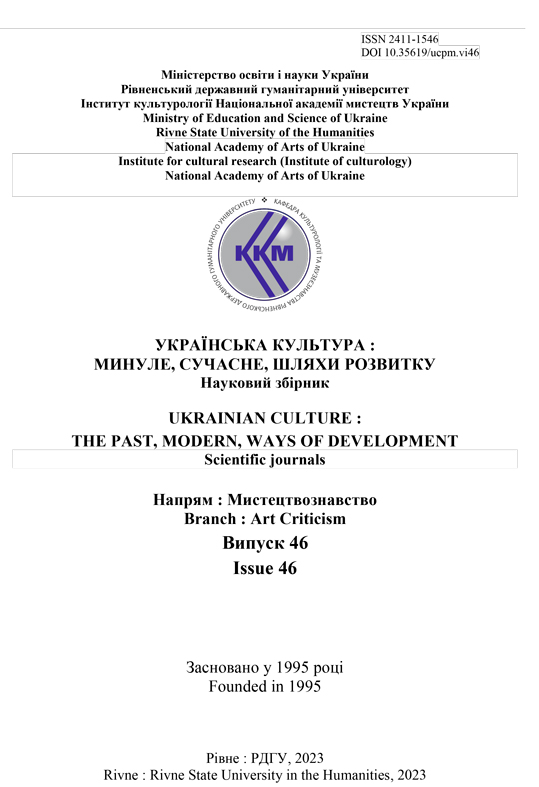SPATIAL IDEAS OF SUPREMATISM: FROM PLANE TO VOLUME
DOI:
https://doi.org/10.35619/ucpmk.v46i.699Keywords:
painting, composition, image, form, color, space, volume, pictorial elements, plastic and color construction, avant-garde artAbstract
The purpose of the article is to theoretically substantiate the concept of Suprematism, to actualize its content as a stylistic artistic movement in the history of twentieth-century art. The methodological basis of the study is a systematic and historical approach to the study of the subject of research in the context of those phenomena and processes that had the greatest influence on its development. A combination of traditional research methods and approaches (induction, historicism, synthesis, integrated interdisciplinary and systemic approaches) was used, that allowed for a more complete and reliable coverage of the ambiguous picture of the existence of a complex object. The scientific novelty lies in the analysis of the processes of development of the creative concept of Suprematism, in determining the place and role of the artistic movement in the history of twentieth-century art. The research focuses on the study of the artistic processes of the 1910 s and 1920 s during the formation of the main style-forming trends associated with the exit into nonobjectivity, namely, the formation of conceptual problems of Suprematism and Constructivism. Without pretending to be comprehensive, the author of the article seeks to highlight the process of developing a stylistic component within Suprematism, namely: in what sequence such elements as color, geometric shapes, volume, space were included in this component, in what hierarchy these elements were located, and which of them formed the core of Suprematism. To reveal the topic, the main periods of the development of K. Malevich's Suprematism are analyzed, from the depiction of planar geometric shapes in illusory space to voluminous abstract compositions that were created in the process of artistic experiments with form in real space. Conclusions. Suprematism, as one of the artistic styles, developed at the turn of the newest destructive formal experiments that created a laboratory of «pure» forms, colors, planes, and space, preparing the ground for a new stage in the history of twentieth-century art. Detached from the real world, emphatically philosophical in its manifestations, Suprematism was embedded in non-objectivity and hereditarily associated with to Cubism, Futurism, and Cubo-Futurism. Given the significant role of color and volume, the combination of simple geometric planes with space (or with a white background as its symbol) was crucial for the formation of the style component of Suprematism. The combination of these elements of the stylistic core of Suprematism turned out to be the most common stylistic feature. From the very beginning, from the zero level of forming, early, planar Suprematism was oriented towards entering space. This determined the influence of Suprematism on the stylistics of the subject environment and its entry into the three-dimensional structure of the object. The creator of the new artistic concept looked at the world not as an object of image, but as an object of artistic transformation, which manifested itself as a systematic direction in the field of artistic and aesthetic theories and creative practice.




